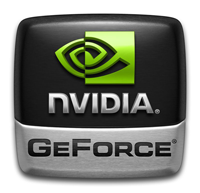Tips for Choosing An Enthusiast Class Graphics Card
By guano —
September 23, 2013
Tags:
akatan00ki
amd
blog
nvidia
pc
Tips for making a solid decision, buying a video card
I've been building PCs for about 15 years now. Everything has changed so much! In most ways it has gotten easier and more affordable for the average person to roll their own gaming computer. Here is a link to my current setup if you're into that sorta thing. I wanna throw out a few of the most important considerations when buying an enthusiast class graphics card. I would define an enthusiast GPU as one that gives you uncompromising performance and image quality. You can game on a mainstream class card and decrease the image quality and play just about any game starting at $150.00 bucks at 1080p. The enthusiast cards start at $225.00. Here are some tips on choosing the right card with some links to help you along.

- Unless you are wealthy or crazy, you should consider price to performance as a key metric in buying a card. There is a diminishing return in the form of minimum frames per second when you pass the mid range price of about $250.00, which tends to be the sweet spot. At the time of writing this, the GTX 760 sells for exactly $250.00 and is Tom's favorite in the 2-$300 range. You can play the most demanding games on the high setting @1080p. Not too shabby!!! Along with minimum frame rate you should look at a GPUs ability deliver smooth frames to your display.These are the 2 most important factors behind price to performance.
- When using benchmarks to help decide, remember that a single GPU solution is always better than multi GPU. There will be a condition known as micro stutter in a multi GPU setup to contend with as well. Mileage will vary upon your setup as well. Beware. AMDs Crossfire is pretty broken and if you must run 2+ GPUs, you must go with the green team There is also the issue of scaling when running multiple GPUs, may it be 2 GPUs on one card or multiple cards. In general, a 2 GPU solution will only yield around 85-90% of theoretical perf. Adding a third or fourth GPU has a dramatically less efficient scaling and should really be avoided from a price/perf point of view. If your ultimate goal is to have the performance of the $500 GPU, just wait and buy it when you have all the cash. Granted 2 $250 GPUs will be faster, it will most likely require a multi GPU ready power supply and motherboard that were designed for these configs, which will most likely be more costly in the long run. Multi GPU setups are not for the faint of heart or for those on a budget. It can be a pain to manage and introduces cooling considerations that most aren't ready for. It can be hot and loud unless perfectly executed.
- You don't need a card over $250 unless you absolutely insist on running the highest level of antialiasing in your games or you're running a resolution over 1920x1080. All that extra horsepower may actually go to waste. Buying the über card will only see gains in minimum FPS at 1080 seeing that the $250 card is probably frame capped at 60 on the max FPS side already! You can pretty much max the eye candy on an enthusiast class card. If you want higher minimum FPS, turn down the antialiasing. It is often the bottleneck. Most serious online multiplayer gamers (may that be WoW, FFXIV, DotA, LoL or CoD, CS or BF) run low or no AA and turn off v-sync because they are the settings that most effect display lag. With those settings in line your minimum FPS will never be an issue with the other settings cranked!
- There needs to be some balance in your computer. If you're running a CPU that doesn't have an integrated memory controller, you may want to consider a CPU and motherboard first. It's not so much about this one feature as you are probably more than four or five generations back in architecture. A GTX 760 and an Intel Core Duo is an example of a 7 year old platform with a modern GPU. There will be a bottleneck between the components. A new GPU will scale with your platform, meaning the faster the CPU, the more frames the GPU will give you! You can get an i3 (with abysmal integrated graphics perf) and a motherboard for $250. These GPUs need to stay fed and that's just what it takes these days. If you have a platform more than 3 or 4 generations back, don't spend money on a new card. Consider a used GTX 4xx or HD 5xxx series GPU. Other budget based alternatives are an AMD APU and motherboard for about $250, that will give you the gaming performance of about a $100 discrete GPU, possibly killing two birds with one stone, if you are just way behind the times. Instructions per clock are not on par on AMD CPUs, compared to Intel's latest offerings but this is a very viable solution for those on a budget!
Good luck and have fun!
9,371
Views
10
Stories
![]() Editor's Choice
Editor's Choice
Release Date:
N/A












